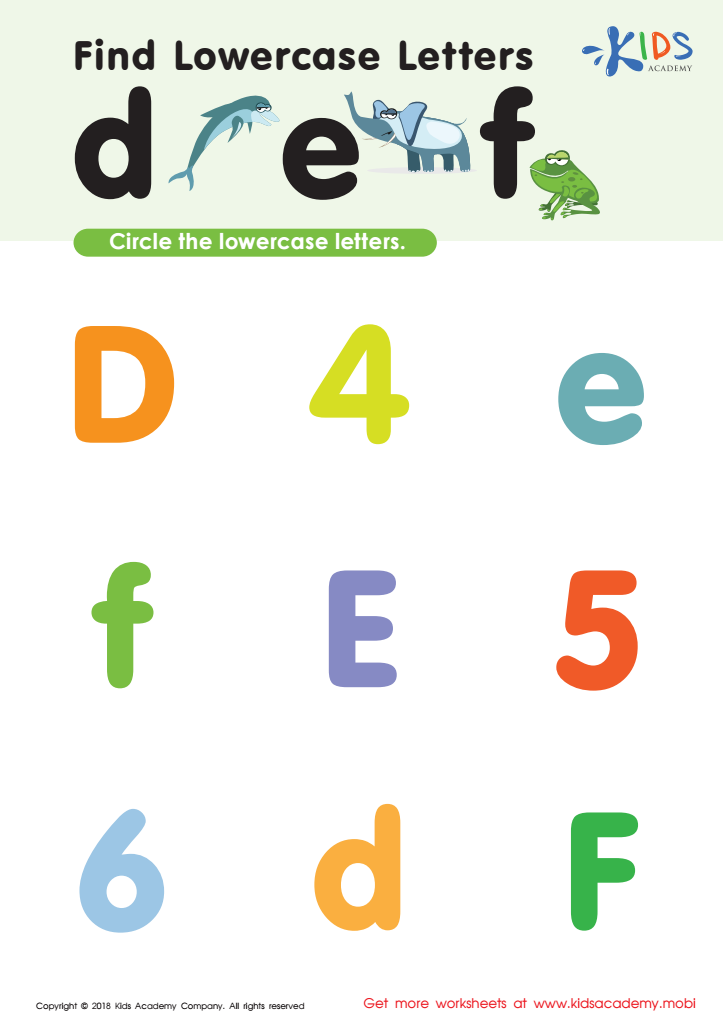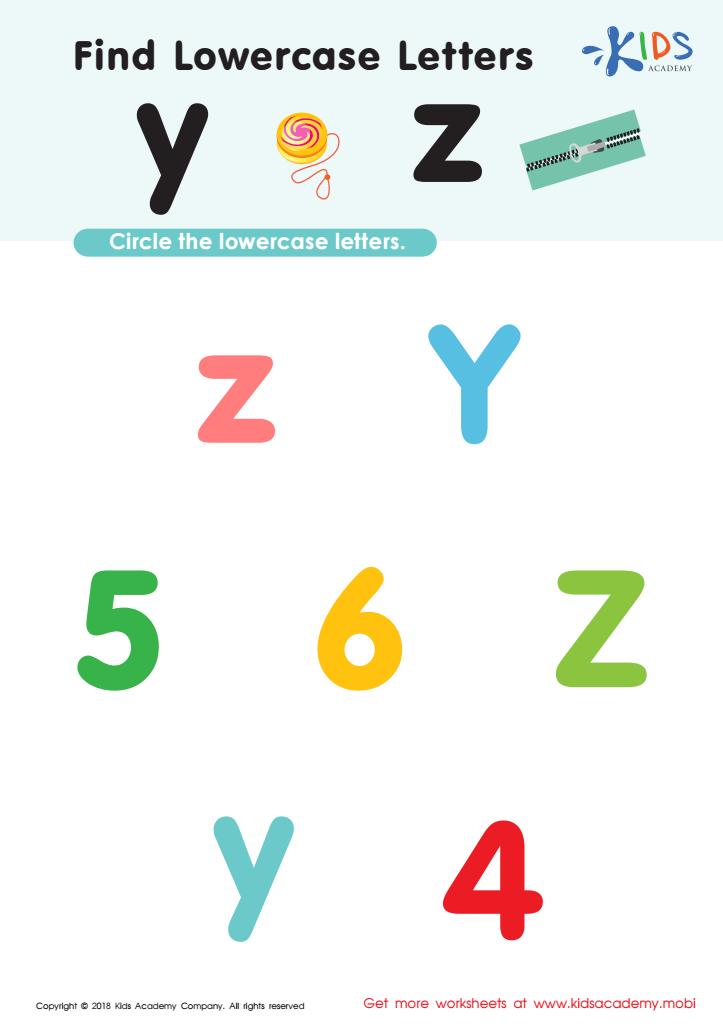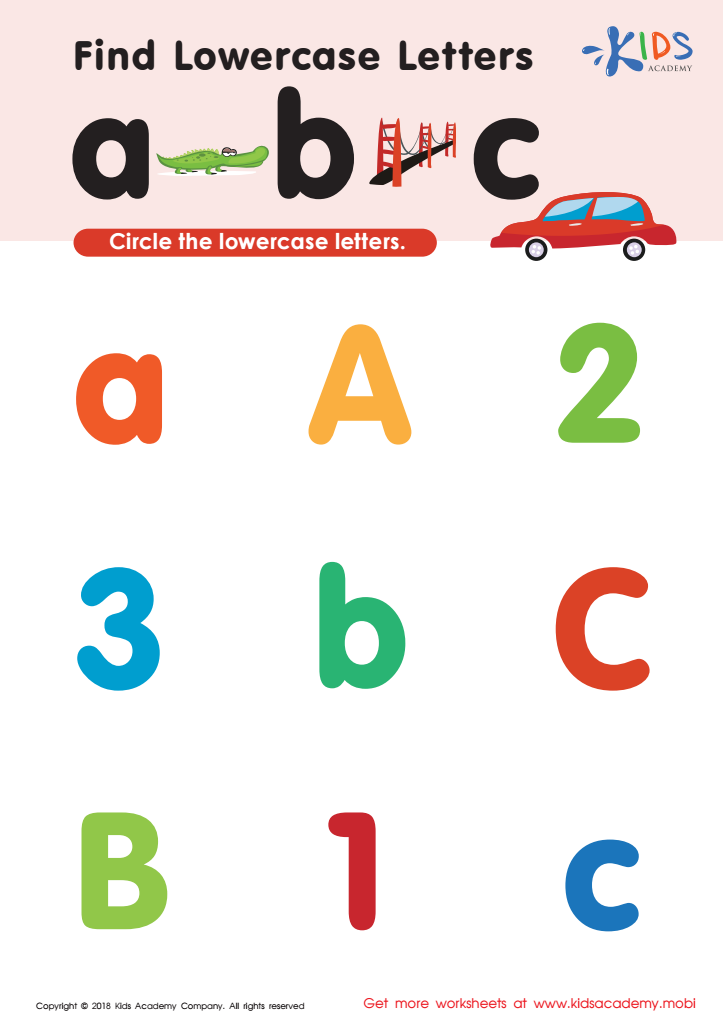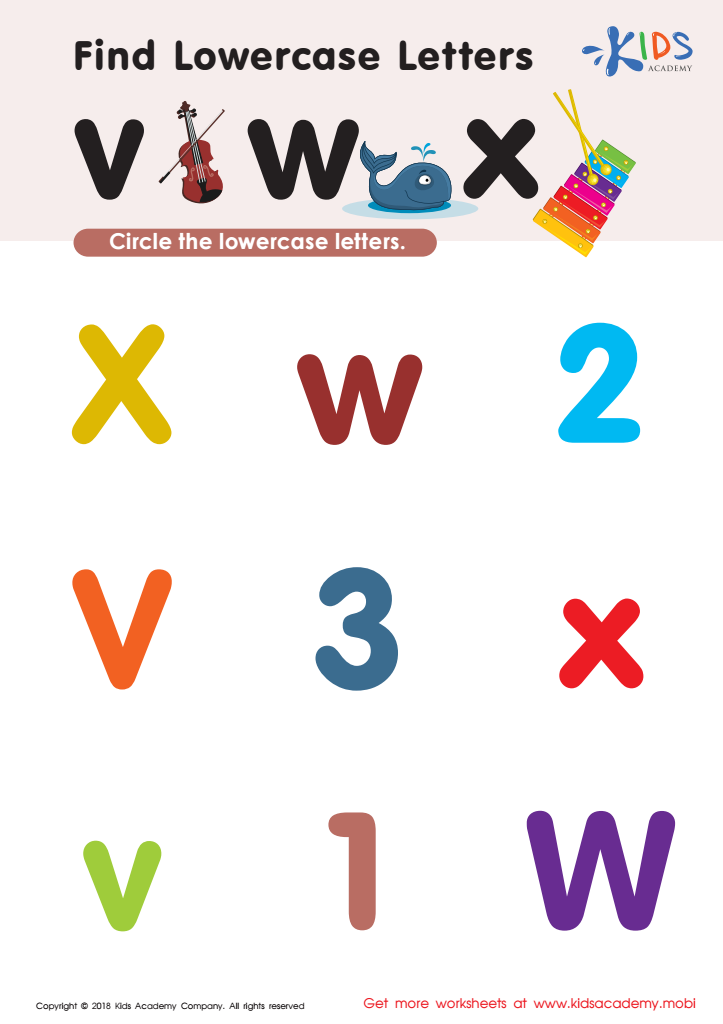Lowercase identification Normal Letter Recognition Worksheets for Ages 5-8
4 filtered results
-
From - To
Boost your child's lowercase letter recognition skills with our engaging worksheets, specially designed for ages 5-8. These activities focus on normal letter identification, allowing young learners to become familiar with the alphabet's lowercase shapes and sounds. Each worksheet is thoughtfully crafted to promote not only recognition but also cognitive engagement through fun exercises. Your little ones will enjoy colorful visuals and interactive challenges while developing essential reading and writing proficiency. Perfect for home schooling, supplementary classroom material, or playful learning at home, these worksheets are a great resource for nurturing early literacy skills. Start your child's alphabet journey today!


Find Lowercase Letters d e f Worksheet


Find Lowercase Letters y z Worksheet


Find lowercase letters a b c Worksheet


Find Lowercase Letters v w x Worksheet
Lowercase letter identification is critical for children aged 5-8 as it forms the foundation for reading and writing skills. Recognizing lowercase letters is essential because most of the text in books, worksheets, and everyday print is in lowercase. This recognition helps children to decode words more effectively, paving the way for improved reading fluency and comprehension.
Moreover, lowercase letter recognition supports writing development. As children learn to form and utilize lowercase letters, they begin to express their thoughts in writing, enriching their communication skills. This proficiency not only fosters academic confidence but also nurtures a sense of accomplishment and eagerness to engage with written language.
Teachers and parents are vital in promoting this skill through interactive activities, games, and consistent practice in both structured settings and everyday scenarios. By emphasizing lowercase letter recognition, they help establish a strong literacy foundation, preparing children for future academic success. Furthermore, strong literacy skills are directly linked to lifelong learning, critical thinking, and overall communication abilities. Therefore, both parents and teachers should champion lowercase letter identification, understanding its significant role in shaping proficient readers and writers in an increasingly text-rich world.
 Assign to My Students
Assign to My Students




















